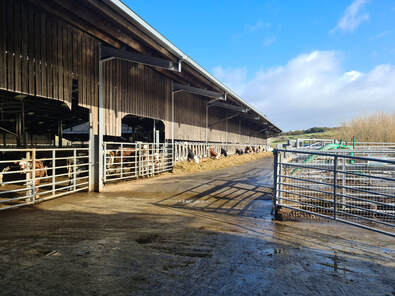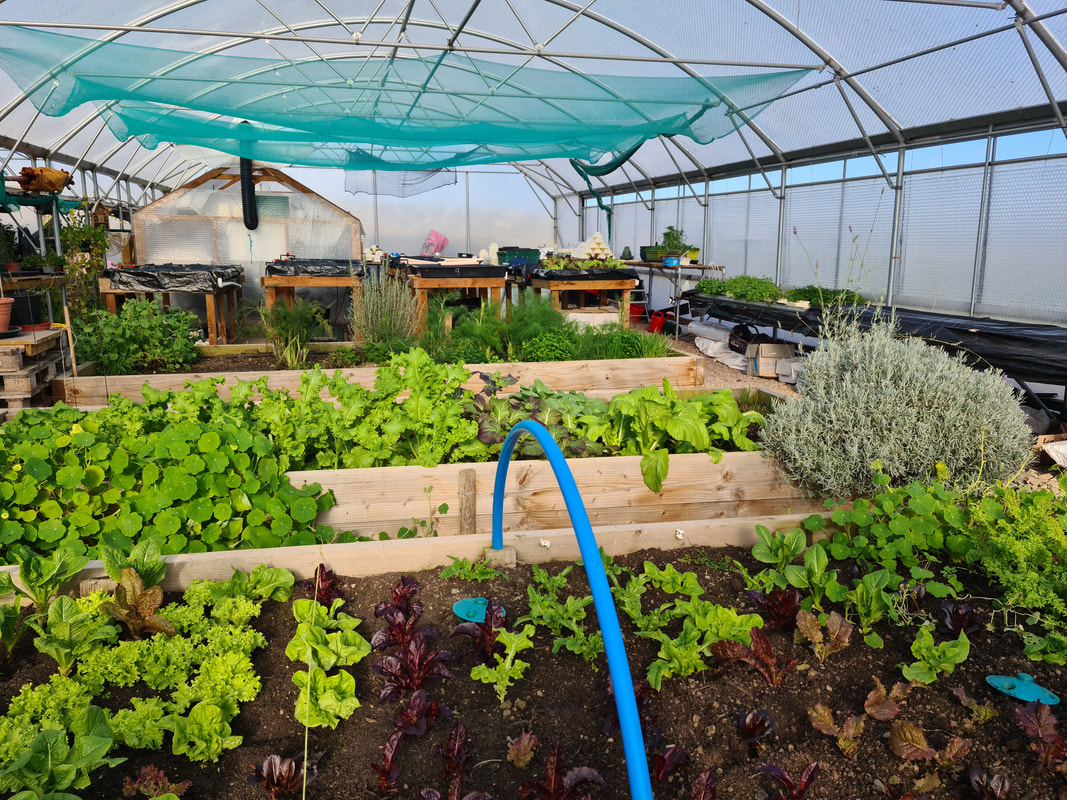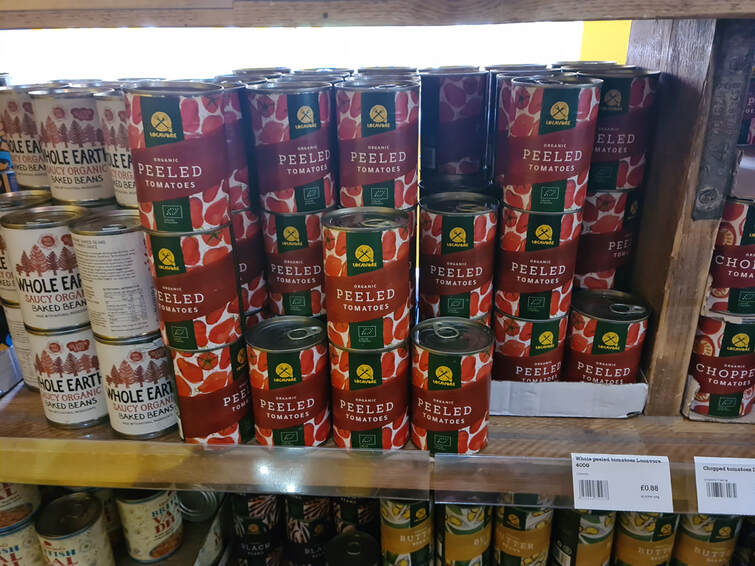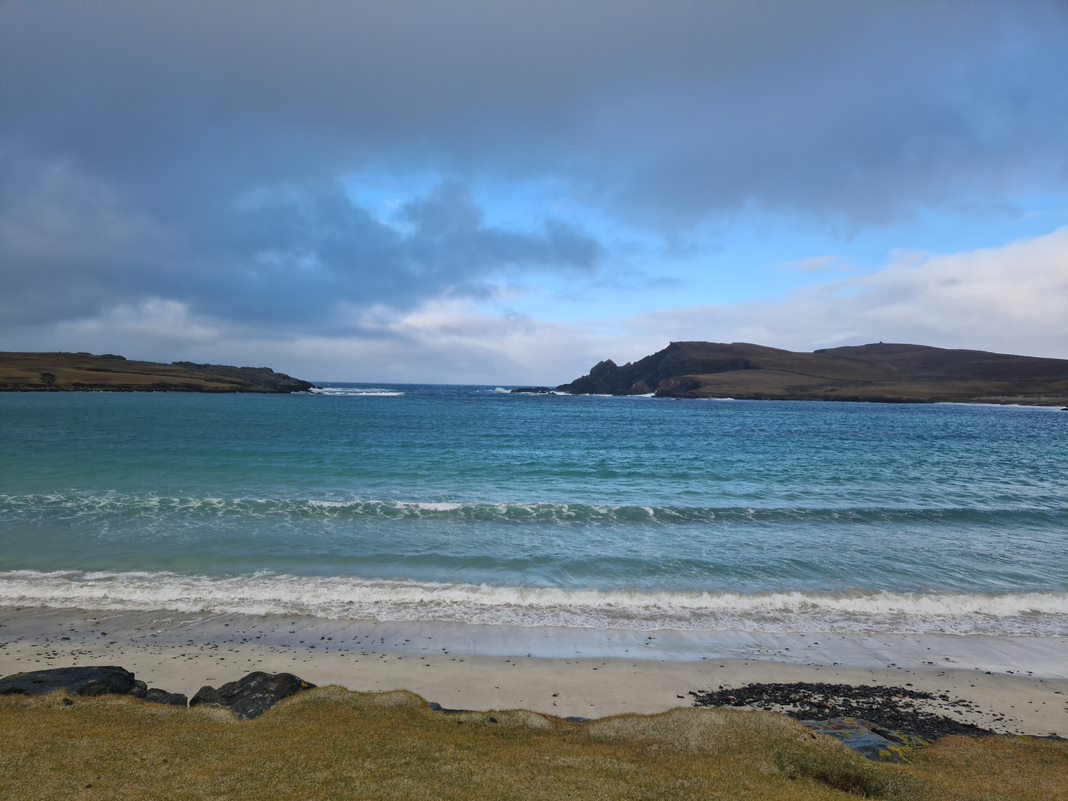 Dispatches from Dumfries and Galloway On departing Glasgow, I took a wee detour to Ayr to acquire some new wellies in anticipation for the next day’s farm visits in Dumfries and Galloway. As Storm Franklin continued to blow through Monday night, I woke up to howling wind and rain early on Tuesday morning. A quick check of the Met Office app reassured me that by 9am there would be calm and sun and so it was. For two of my three Dumfries and Galloway site visits (The Ethical Dairy and SaladBrew), I was joined by Finlay Carson MSP and Convenor of the Rural Affairs, Islands and Natural Environment Committee. Our first stop was the Ethical Dairy (and Cream O’Galloway) where we were met by the owners David and Wilma Finlay. Over 25 years, they have been ploughing their own road from originally being a conventional dairy farm to a fully organic farm and dairy (producing cheese and ice cream) and more recently (into 6th year) an innovative dairy cow/calf system. The calves stay with their mothers for 5-6 months (who are milked just once-a-day after 6-8 weeks), though they separated at night, normally from about 6-8 weeks of age to prepare them for weaning, to help their rumen development and to ensure we get at least a little milk from the cows in the morning. After weaning they milk the cows twice-a-day, as they are still producing a lot of milk for the next couple of months, or so. It then reverts back to once-a-day milking. Whilst this reduces the overall milk yield/cow, the system delivers other benefit requiring little or no additional inputs (apart from grass-based feed produced on the farm), producing very fast growing calves (grow twice as fast as in conventional systems), improving animal welfare and wellbeing (calm, relaxed, comfortable animals), extending the productive life of the dairy cows (on average 9 years) and enhancing working conditions. About 85% of the milk produced is processed on the farm for cheese and ice cream production. Between the farm, dairy (cheese and ice cream), café and retail/management operation, the Ethical Dairy (and Cream O’Galloway) is employing approximately 30 staff, producing high welfare milk, beef calves and lamb, supporting the local economy (tourism and retail), driving up biodiversity and environmental standards across the farm, reducing reliance on expensive inputs (feed; fertilisers; antibiotics) and working collaboratively with public and private supply chains to grow and diversify their business. Our 2nd stop was to Salad Brew, a small hydroponics salad and vegetable farm in Borgue. Rod and Anne Bannatyne set it up in 2017, after being inspired by seeing another operation whilst on holidays in the north of Scotland. Originally a retirement project for Rod they made an initial investment of approx. £26k to build their innovative Kater House (a glass house style construction but with bubblewrap insulation instead of glass). They are growing salad, microgreens, tomatoes, peppers and chillies (to name a few) using a hydroponics system supported by collected rainwater and solar panels for renewable power. Their growing season extends from March to September/November depending on how damp the weather gets in September. They are supplying directly to local customers, one local retail shop and a few food service/hospitality outlets. They have the capacity, and interest, to increase production with supported investment. This funding could go towards installing mini vertical farming equipment or generating the power to heat the kater house. They have encountered challenges with applying for funding and navigating the complex bureaucracy associated. They believe there is great opportunity to grow the network of kater houses/poly tunnels/poly curbs in Dumfries and Galloway in order to grow the quantity and diversity of locally grown vegetables and greens. My 3rd stop was the innovative central food store managed and operated by Dumfries and Galloway Local Authority under the leadership of Alan Mawson. D&G are the only local authority in Scotland to have invested in and to manage a central food stores. All the school food (except fruit and vegetables and milk) are delivered to this central food store and then the Local Authority, using a fleet of vans, mange the distribution and logistics out to all their schools across D&G. This system facilities D&G to have much greater oversight of, and agility with, their school food deliveries, manage the geographical challenges associated with this part of Scotland, engage in innovative logical management (including back hauling) and facilitates forensic processes for checking, and adjusting, how they do school food from a procurement perspective. Across the 3 sites, and through our detailed discussions, the following issues kept cropping up: 1. Workforce and Housing
2. Viability and Sustainability of Dairy Farming
3. Local Economic and Social Development
4. What does a 20 minute neighbourhood look like, and mean for, Rural Communities
5. Public Food Procurement
0 Comments
Dispatches from Glasgow City
Back on the road on Monday 21st Feb, my first stop was Glasgow City (south) to visit Locavore Govanhill (where I met Dorothea “Doro” Warlich), Manswewood High Park Allotments (where I met the Chair of Manswewood High Park Allotments Iain Sutherland, Judy Wilkinson; Jenny Reeves of Glasgow Allotments Forum and Charlotte Keeley from the Glasgow City Food Network). Across both visits, and a wonderful lunch at Locavore Govanhill, I learnt about grassroots food growing across Glasgow (in allotments, community gardens, market gardens), the barriers faced (especially with access to land and the lack of a coordinated, centralised allotment waiting list system) and the passion, creativity and business acumen required from the expanding team at Locavore (and all its various activities – growing, veg boxes, wholesaling, retailing) to drive forward the development and expansion of Locavore within and beyond Glasgow. Interestingly, whilst there were some differences across the sites, the following set of common themes emerged: 1. Access to land Both organisations are passionate about growing locally but a key constraint is access to, and use of, land (including public land). Whilst the Community Empowerment Act and associated local food growing strategies prioritised access to land on paper, little change has happened on ground in Glasgow City. There is continued and even increasing bureaucracy associated with the strategic prioritisation of land for growing and the subsequent development of new, or expansion of existing, food growing spaces. 2. Network of Small Growers (and route to market if required) The importance of community networks was evident with both organisations recognising the vital role played by informal and formal networks in supporting the development, and sharing of, skills, seeds, growing techniques and produce (where appropriate), reducing social isolation, driving greater ethic and cultural integration, supporting community engagement and providing access to urban green space. 3. Short Supply Chains (cutting out the middlemen!) The really interesting part of Locavore’s original and growing business model is how they have, and continue to, work out ways of shortening, and integrating (both vertical and horizontal), their supply chains. Having recently acquired a wholesaling business (and moving it north to Glasgow), they are now able to deal directly with some overseas suppliers (especially for tomatoes; legumes, olives and olive oil) and are developing their own brand range organic canned goods (started with tinned tomatoes and expanding to other canned products). This has allowed them to become more independent in their sourcing and supply of key products for their retail business but also has provided the platform for the development and growth of their wholesale operation which is now supplying other independent retailers (as well as their own 5 stores) and was recently awarded the dry goods tender for East Ayrshire School Food. In addition to their wholesaler operation (vertical integration), Locavore are also working actively to acquire, and develop, more growing land to support their stores and to partner with farmers (and guaranteeing a route to market) interested in, or who have completed, organic conversion. This multipronged approach is allow them to grow sustainably as a business, to build their network of growing spaces and growers/supplier and to support more and more local/regional farmers with their conversion to lower input sustainable and/or organic production. 4. Bureaucratic barriers (impenetrable for many) Both organisations talked about the bureaucratic challenges faced in dealing with the Local Authority and/or in applying for funding support and/or in getting access to land. For many, especially those in the allotment community, the level and type of bureaucracy acts as a real barrier of entry and engagement. Mary’s Tour, Dispatches from Shetland
Joined throughout by Beatrice Wishart (MSP Shetland) and Neil Beattie (Team Leader – Catering and Cleaning, Shetland Island), I visited 4 different businesses:
Across these 4 agri-food and drink businesses we witnessed great entrepreneurial spirt, real resilience, the generation of, and support for, multiple local jobs and the willingness to take personal and professional risks to grow and expand (where possible). There was also a real and deep connection to place, a commitment to, and innovation in how they, supply and deliver to public and/or private sector customers (role of the local public bus service in delivery suppliers to schools and businesses) and the perfect storm which threatens their viability and capacity to continue to generate jobs and produce, process and serve local Shetland food and drink. We learnt how public food (in particular school food) is transforming in Shetland in terms of standardised school menus, local procurement, workforce pay and development, investment in food in schools (polytunnels and school gardens) and the recent award of Food for Life Bronze accreditation. We also learnt how the tourism sector is growing and offers real potential for small food and drink businesses but that more needs to be done to join up the support and facilitate creative partnership working (including between public and private sector). Across the sites visited, a shared set of common challenges emerged namely:
Whilst Storm Dudley and Eunice have played havoc with my original plans to head straight from Shetland to the outer Hebrides (rescheduled to late March), my grand tour of Scotland continues with trips next week to farms, a vegetable producer, community initiatives, independent local food retailers, and a central public kitchen with stops in Glasgow (Mon 21st), Dumfries and Galloway (Tues 22nd), Argyll and Bute (24th) and Islay (25th). |
AuthorProfessor Mary Brennan - Chair of the Scottish Food Coalition ArchivesCategories
All
|
Proudly powered by Weebly




 RSS Feed
RSS Feed